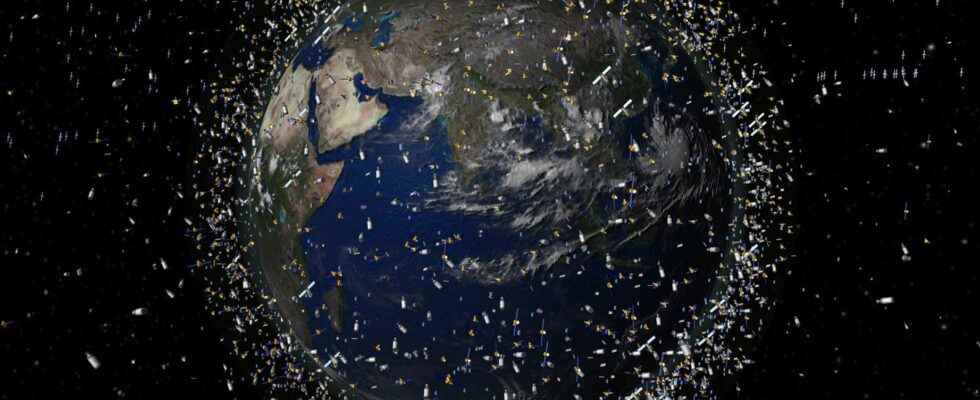the syndrome of Kessler owes its name to Donald J. Kessler. In 1978, the astrophysicist theorized a scenario in which the collision of debris between them self-sustains the population at a higher rate than that of their natural elimination by atmospheric braking of new debris.
Clearly, the number of debris that naturally fall back into theatmosphere is less than the number of those generated by the collision of existing debris. Even if all space activity and launches were to cease tomorrow, the debris population would continue to increase exponentially, leading to a situation in which some orbits would become impracticable in the long term.
Space debris in orbit is increasing rapidly
In the future, Kessler syndrome could prevent the use of certain orbits, in particular at altitudes where observation satellites operate, between 700 and 1,100 km. To date we do not know if this point of no return was reached.
To limit the number of space debris in orbit, measures to preventions were enacted by the Inter-Agency Space Debris Coordination Committee (IADC). The first limit is 25 years, the time a satellite can remain in space after the end of its mission. The second provides for the passivation of the upper stages after use by jettisoning the residual fuel, to limit the risk of an explosion of the unburned fuel which would generate thousands of new debris.
For their part, the space agencies finance research and development programs aimed at developing satellites and technologies capable of deorbit debris the biggest and most threatening.
You will also be interested
[EN VIDÉO] Space debris: more than 20,000 objects pollute the Earth’s orbit Since 1957 more than 5,000 machines have been sent into space, regularly generating a lot of space debris. These objects are a threat to future missions that Cnes takes very seriously. The organization presents a video of solutions to combat this problem.
Interested in what you just read?
